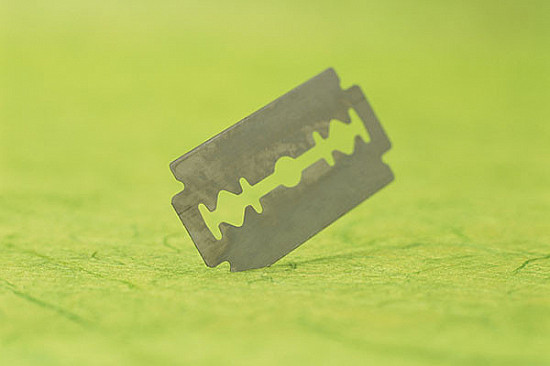Understand why some teens engage in self-harm and how families can respond.

The notion that hurting yourself can make you feel better seems like a contradiction. But that’s exactly what drives skin cutting and similar forms of self-harm among adolescents, says Matthew Nock, chair of the department of psychology at Harvard University.
If you’re a parent, you may have heard about cutting or be wondering about red flags. Here are the basics on what to know, and how you can respond if you’re concerned about this form of self-harm.
What is self-harm?
“Self-harm is the intentional destruction of body tissue in the absence of any intent to die,” explains Nock, who specializes in treating self-injury behaviors in childhood to young adulthood. “Most often it happens on the arms and takes the form of cutting with some type of sharp object, such as a razor blade, pencil, or pocket knife. It might also include burning the skin or inserting objects under the skin, such as paper clips.”
How many teens engage in self-harm?
About 17% of teenagers engage in self-harm at least once, according to the American Psychological Association.
Many who do so begin between ages 12 and 14, when adolescence can deliver a one-two punch: combining a new mental health disorder with greater risk-taking behaviors, explains Nock.
What leads some teens to engage in cutting?
Cutting appears to affect all genders of adolescents equally, Nock notes. But what factors make teens more likely to do it? In addition to experiencing depression, anxiety, or other mental health issues, teens who cut themselves may be more apt to use drugs or alcohol.
A 2022 study in Child and Adolescent Mental Health suggests additional contributing factors, including family problems, school or job challenges, and struggling relationships with friends. Ultimately, cutting appears to have three contributing components, Nock says: psychological, biological, and social.
“Kids who engage in self-injury have difficulty tolerating emotional distress and are more likely to try to escape from those feelings,” he says. “It might be that their pain demands attention, and when they’re really upset, cutting themselves focuses on their physical pain and reduces their psychological pain.”
The sense of relief or release after cutting reinforces the behavior, leading teens to cut themselves again and again. “An adult who’s feeling upset may have a drink, go for a run, or engage in yoga to decrease their distress. When they feel better afterward, that behavior gets reinforced,” Nock says. “We think the same is true with self-injury: if you feel really bad and cut yourself, the feeling goes away.”
Will asking about cutting put ideas in a teenager’s head?
Parents often worry about this. But it’s safe to assume kids in middle school and high school are well aware of what self-harm involves, from social media and interactions with peers and others. “Asking kids about it isn’t going to give them the idea to do it — all of the data we have suggests that’s not the case,” Nock says.
What are key signs of cutting in teenagers?
Be alert for
- fresh cuts on a teen’s skin, or evidence that skin has been cut, burned, or had objects placed under it
- covering body areas — whether arms or legs — they didn’t tend to cover before.
Is there a connection between cutting and suicide?
While teens who engage in cutting don’t intend to end their lives that way, their willingness to hurt themselves might indicate a greater risk that they may attempt suicide. More than 50% of children and adolescents who die by suicide have previously self-harmed, according to the 2022 study described above.
“The more you intentionally hurt your body — which takes some amount of courage to do — the more likely you’ll target yourself in the future,” Nock says. “We also think there’s a self-hatred component to this — you’ll hurt your body when in distress rather than do something productive like go for a run. There’s a sort of self-criticism that leads people to hurt themselves and ultimately try to kill themselves.”
How can parents respond if they notice signs of cutting?
If they confide in anyone at all, teens who self-harm tend to tell their friends, not their parents or other adults. But parents can break through the secrecy and offer support with a calm, steadfast approach.
“Encourage them to talk to you about what they’re experiencing, knowing that you’re an open ear and will be as nonjudgmental as possible,” Nock says. “It’s not realistic that we’re going to root out all risky behaviors that kids engage in. But when death is a potential outcome, encourage friends and family not to honor that secrecy and to try to intervene to keep the person safe.”
Seeking appropriate resources can help:
- Take your child to a primary care doctor who can refer to a mental health professional, or go directly to a psychiatrist, psychologist, or social worker for evaluation.
- Ask your doctor or a mental health professional about local or telehealth options for cognitive behavioral therapy (CBT) or dialectical behavior therapy (DBT). Both approaches can help teens learn healthier strategies to cope with emotional distress.
- If your child’s self-injury seems severe or you’re concerned about the possibility of suicide, go to a hospital emergency room. “If our kids fall and suffer a break or accidental injury that needs medical attention, we go to the ER — and the same should happen for injuries that are self-inflicted,” Nock says.
